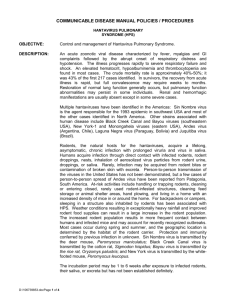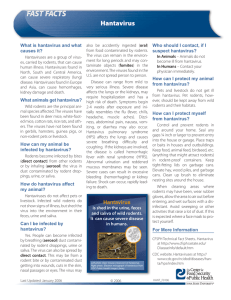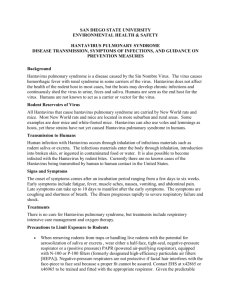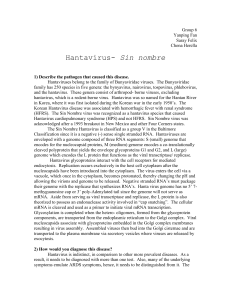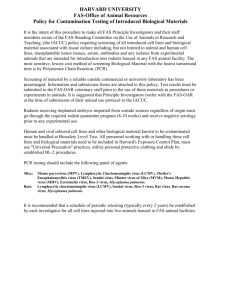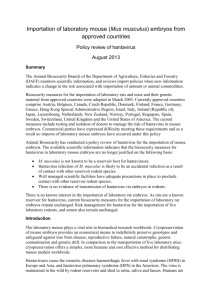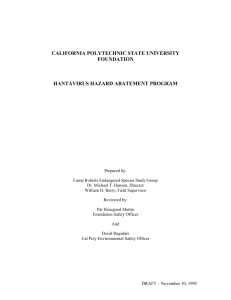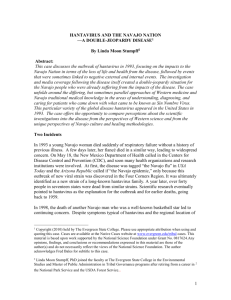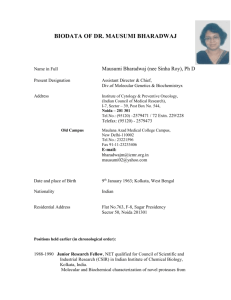BIO LAB RESEARCH PAPER
advertisement
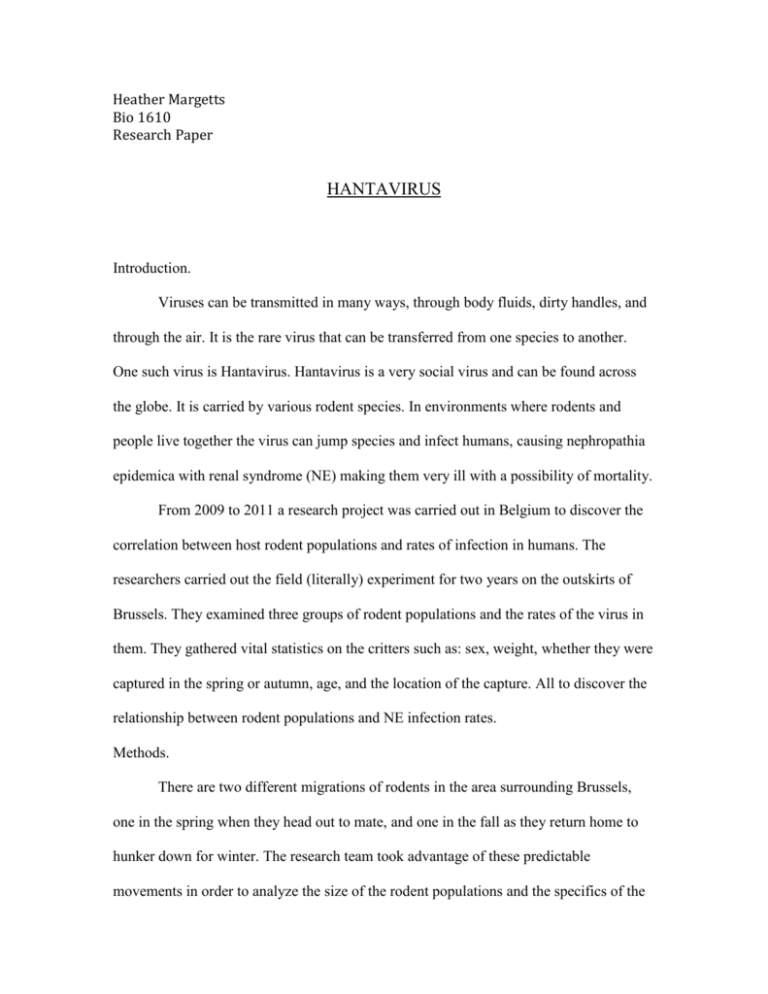
Heather Margetts Bio 1610 Research Paper HANTAVIRUS Introduction. Viruses can be transmitted in many ways, through body fluids, dirty handles, and through the air. It is the rare virus that can be transferred from one species to another. One such virus is Hantavirus. Hantavirus is a very social virus and can be found across the globe. It is carried by various rodent species. In environments where rodents and people live together the virus can jump species and infect humans, causing nephropathia epidemica with renal syndrome (NE) making them very ill with a possibility of mortality. From 2009 to 2011 a research project was carried out in Belgium to discover the correlation between host rodent populations and rates of infection in humans. The researchers carried out the field (literally) experiment for two years on the outskirts of Brussels. They examined three groups of rodent populations and the rates of the virus in them. They gathered vital statistics on the critters such as: sex, weight, whether they were captured in the spring or autumn, age, and the location of the capture. All to discover the relationship between rodent populations and NE infection rates. Methods. There are two different migrations of rodents in the area surrounding Brussels, one in the spring when they head out to mate, and one in the fall as they return home to hunker down for winter. The research team took advantage of these predictable movements in order to analyze the size of the rodent populations and the specifics of the carriers of the virus. They wanted to discover the leading factors involved the movement of Hantavirus hosts and the possible causes of involved in its transmission. On the outside of town the researchers set out traps to capture the bank voles, wood mice, and rats, along with the occasional owl or fox. Painstaking statistic collection was carried out with information about the capture, especially seroprevalence of Puumala Hantavirus, which causes hemorrhagic fever in humans. Species, size, weight, repeat capture count, and many other data points were used in their analysis of the rodents and virus. Results. Hanta virus is a socially transmitted virus in rodents and humans. When populations of voles become dense, the Hantavirus seroprevalence rates become elevated. Its highest rate in the study shows that nearly 60% of voles will be carrying the virus at a time. This is a heyday for Hantavirus and can occur when there are 140 or more voles per hectare, or about 57 voles per acre. The large, older male voles had the highest rates of Hantavirus. They also had the largest home range, or home territory. Also the females with larger home ranges had higher rates. Remember that Hantavirus is a social virus and the social butterflies, or males looking to mate, are much more likely to be exposed to the virus. This phenomenon has another side to it. The voles who are more willing to travel, for whatever reason, are also much more likely to cross paths with humans. And so, the rodents who are most likely to carry Hantavirus are also the most likely to bump into our cities. In the end there is a positive correlation between virus carrying rodent populations and human infections. Discussion. “This two-year study showed that bank voles were common at all three suburban sites studied and that Hantavirus was detected in voles at least at one site during each of the four capture seasons.” (Dolby, A, Journal of Vector Ecology, Spatiotemporal dynamics of Puumala hantavirus in suburban reservoir rodent populations, Dec, 2012). There is a potential threat to public health due to these vector populations. With this research there is data to point to in order to mitigate the possible infection of human populations. The team’s research seems to confirm the somewhat commonsense hypothesis that as rodent populations go up, so do the rates of human hanta virus infection. This was a medium length research project, and their data is still restrained by the relatively short time frame. But, this is valuable information. It could be used to enact public policy such as the Nature Conservation Board of the Brussels Region. This data could funnel money into more projects to monitor specific risky species in order to protect the public. If effective in Brussels, similar practices could be put in place the world over to protect the health of people everywhere.
